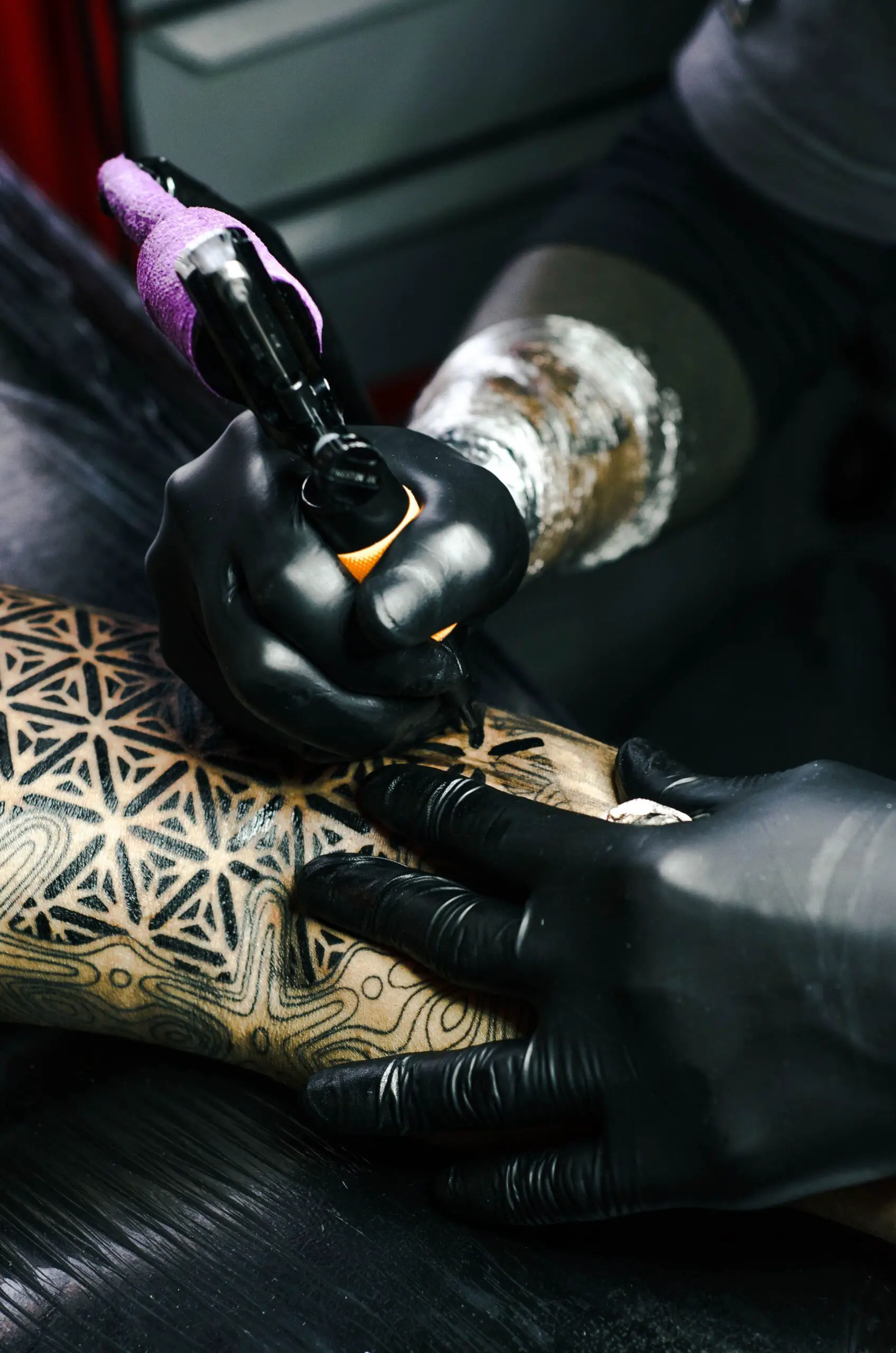Do Behind Ear Tattoos Hurt ? In recent years, tattoos have evolved from being merely traditional symbols to contemporary expressions of individuality and style. One particular placement that’s seen a surge in popularity is the delicate and discreet area behind the ear. Whether it’s a dainty flower, a musical note, or even a meaningful symbol, behind-the-ear tattoos have become a favorite among tattoo enthusiasts and first-timers alike. But with this rising trend, a pertinent question emerges for many
Contents
Anatomy of the Behind-the-Ear Area
The human body is a complex tapestry of varying textures and sensitivities, and the area behind the ear is no exception. When considering this particular location for a tattoo, understanding its anatomy can provide valuable insights into the expected pain levels.
Firstly, skin thickness and sensitivity play a vital role. The skin here is notably thinner than in many other parts of the body. With its delicate nature, it lacks the kind of fatty cushion found in areas like the thighs or upper arms. This thinness means there’s less of a buffer between the needle and underlying structures, potentially increasing sensitivity during the tattooing process.

Another crucial factor to consider is the proximity to the bone. When tattooing close to bony areas, the sensation is generally described as more intense than on fleshier parts. The skull bone lies just beneath the skin behind the ear, and as the tattoo needle vibrates and punctures the skin, it can cause a more pronounced discomfort due to this closeness.
Both of these anatomical traits, when combined, offer a unique experience for those opting for behind-the-ear tattoos. While the delicate nature of the skin and the closeness to the bone can increase the sensation, it’s essential to remember that everyone’s pain threshold is different, and personal experiences may vary.
Nerve Endings and Sensation So, Do Behind Ear Tattoos Hurt ?
When assessing the pain levels associated with tattoos, understanding the nerve endings in the area is crucial. After all, it’s these tiny nerve fibers that transmit the sensation of pain to our brains.
The region behind the ear is known to have a dense concentration of nerve endings. These nerve endings are part of a network that serves the scalp, face, and parts of the neck. Because of this intricate web of nerves, the area can be particularly sensitive to touch, temperature, and of course, the puncture of a tattoo needle.
To provide a clearer picture, let’s compare it with other common tattoo locations:
- Forearm: This area is popular for tattoos and is often chosen by first-timers. The skin is relatively thick with fewer nerve endings compared to behind the ear, making the tattooing experience generally less painful.
- Ribs: The ribcage, like the behind-the-ear region, is close to the bone and has a high density of nerve endings. Many consider rib tattoos to be among the most painful due to these factors.
- Thighs: Thicker skin and more muscle mass mean fewer nerve endings are close to the surface. Thus, while it might still be uncomfortable, it’s often described as more bearable than behind-the-ear tattoos.
Factors Affecting the Pain Level
While the anatomy of the behind-the-ear area and its nerve endings play a significant role in pain perception, other factors can also influence how one experiences discomfort during a tattoo session.
Tattoo Size and Duration: Unsurprisingly, the length and complexity of a tattoo session have a direct relationship with the pain experienced. A small, simple design behind the ear may be over quickly, causing only brief discomfort. However, intricate or expansive designs that require longer sessions can become more taxing. As time progresses, the skin can become more sensitive, making each additional pass of the needle more noticeable. Thus, when pondering “Do behind ear tattoos hurt?”, it’s essential to consider the design’s size and anticipated duration.
- Tattoo Artist’s Technique: Not all tattoo experiences are created equal, and much of this comes down to the artist’s technique. An experienced tattoo artist will know how to handle the needle and the machine efficiently, potentially reducing the amount of trauma to the skin. The type of equipment used, the depth of the needle, and even the speed at which the artist works can all play roles in the level of discomfort felt. It’s always recommended to choose an artist not only for their designs but also for their reputation in ensuring client comfort.
- Individual Pain Threshold: One of the most variable factors in any discussion about tattoo pain is individual tolerance. What might be intensely painful for one person could be just a minor inconvenience for another. Genetic factors, previous experiences with pain, and even one’s mental state at the time of the tattoo can all influence how pain is perceived. Some individuals may have naturally higher endorphin levels, which can act as the body’s natural painkillers. Others might be more sensitive to pain stimuli. Recognizing one’s pain threshold is crucial Preparing for a Behind-the-Ear Tattoo
- Opting for a behind-the-ear tattoo is a commitment, not just to the art but also to the experience of getting inked. Being well-prepared can significantly influence how you perceive the pain and the overall tattooing process. Here’s how you can set yourself up for a smoother experience:
- Tips to Reduce Pain:
- Staying Hydrated: Well-hydrated skin can handle the tattooing process better. Drink plenty of water in the days leading up to your appointment to ensure your skin is in optimal condition.
- Getting a Good Night’s Sleep: Rest is vital for your body’s overall well-being. A well-rested body can cope with pain more efficiently, and you’ll likely feel more relaxed during the session.
- Avoiding Alcohol and Caffeine: Both alcohol and caffeine can thin your blood, which can lead to increased bleeding during the tattooing process. Avoid these at least 24 hours before your session.
- The Role of Numbing Creams:
- Numbing creams can be a game-changer for those particularly sensitive to pain. These creams, often containing lidocaine, can be applied to the skin before tattooing to reduce sensation. It’s essential to discuss this with your tattoo artist in advance, as some might have preferences or recommendations. Remember, while numbing creams can help, they might not eliminate the sensation.
- Mental Preparation:
- Setting the Right Expectations: Understand that there will be some discomfort. However, being mentally prepared for it can reduce the perceived intensity. It can be helpful to talk to others who have undergone the experience or read about it to know what to expect.
- Staying Calm: Deep breathing exercises, bringing along a comforting playlist, or even a friend for moral support can help keep you calm during the session. A relaxed state can significantly reduce pain perception.
- when preparing for a tattoo, especially in sensitive areas like behind the ear.
Conclusion
What one individual describes as a fleeting sting, another might recount as a more persistent burn. This variability is influenced by several factors, from individual pain thresholds to the tattoo’s specifics and the artist’s technique.
The delicate area behind the ear, with its proximity to the bone and rich nerve endings, can offer a unique tattooing experience, different from many other parts of the body. But while this might sound intimidating, countless individuals have braved the needle in this spot, emerging with beautiful pieces of art they cherish.
For those considering a behind-the-ear tattoo, it’s of paramount importance to do thorough research and engage in open dialogue with professionals. A seasoned tattoo artist will not only provide insights into the process but also offer guidance on managing discomfort and ensuring the best possible outcome for your ink.
So, while the journey to a behind-the-ear tattoo may come with its challenges, with the right preparations and mindset, it can become a memorable and rewarding experience.





